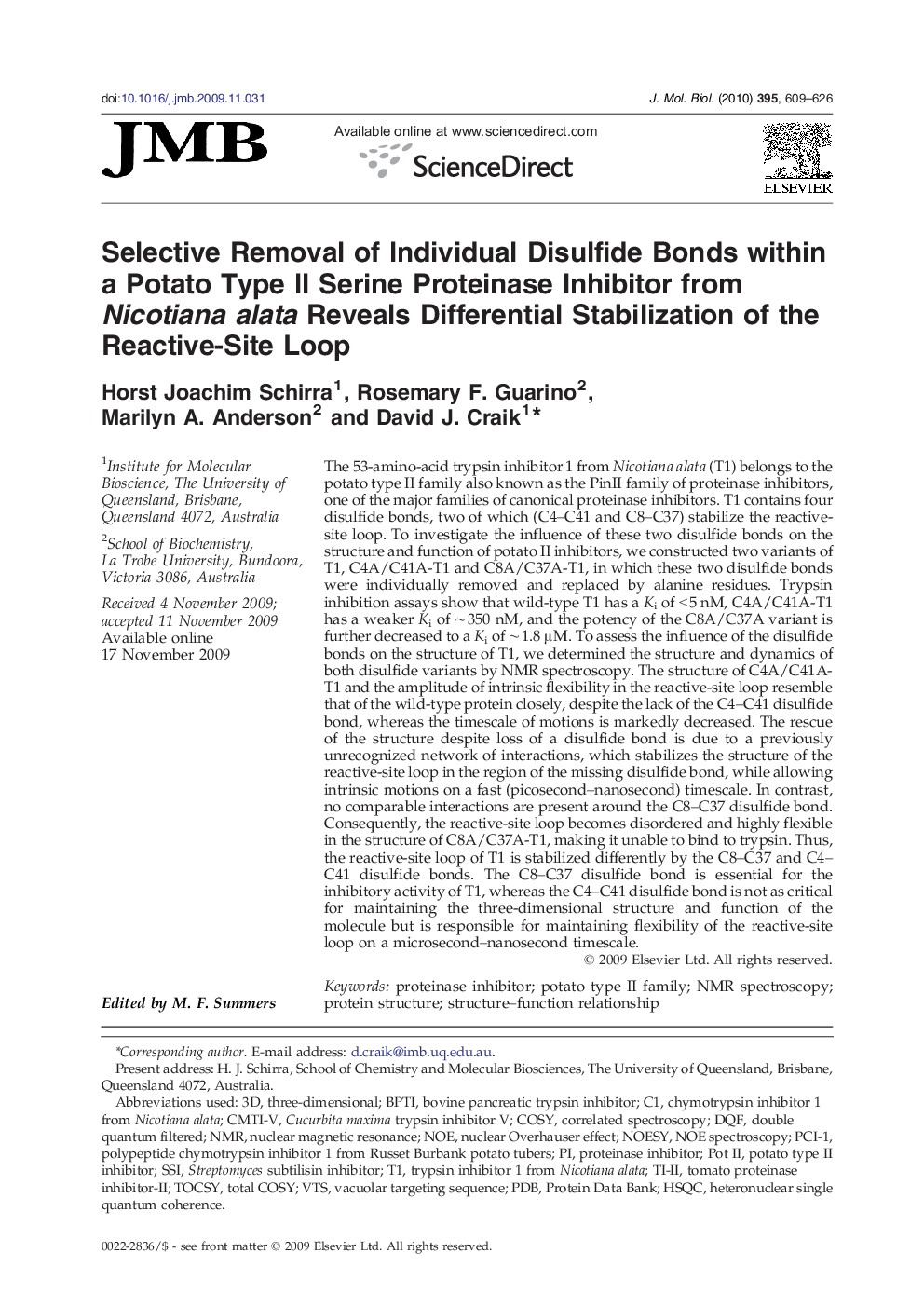| کد مقاله | کد نشریه | سال انتشار | مقاله انگلیسی | نسخه تمام متن |
|---|---|---|---|---|
| 2186162 | 1096037 | 2010 | 18 صفحه PDF | دانلود رایگان |

The 53-amino-acid trypsin inhibitor 1 from Nicotiana alata (T1) belongs to the potato type II family also known as the PinII family of proteinase inhibitors, one of the major families of canonical proteinase inhibitors. T1 contains four disulfide bonds, two of which (C4–C41 and C8–C37) stabilize the reactive-site loop. To investigate the influence of these two disulfide bonds on the structure and function of potato II inhibitors, we constructed two variants of T1, C4A/C41A-T1 and C8A/C37A-T1, in which these two disulfide bonds were individually removed and replaced by alanine residues. Trypsin inhibition assays show that wild-type T1 has a Ki of < 5 nM, C4A/C41A-T1 has a weaker Ki of ∼ 350 nM, and the potency of the C8A/C37A variant is further decreased to a Ki of ∼ 1.8 μM. To assess the influence of the disulfide bonds on the structure of T1, we determined the structure and dynamics of both disulfide variants by NMR spectroscopy. The structure of C4A/C41A-T1 and the amplitude of intrinsic flexibility in the reactive-site loop resemble that of the wild-type protein closely, despite the lack of the C4–C41 disulfide bond, whereas the timescale of motions is markedly decreased. The rescue of the structure despite loss of a disulfide bond is due to a previously unrecognized network of interactions, which stabilizes the structure of the reactive-site loop in the region of the missing disulfide bond, while allowing intrinsic motions on a fast (picosecond–nanosecond) timescale. In contrast, no comparable interactions are present around the C8–C37 disulfide bond. Consequently, the reactive-site loop becomes disordered and highly flexible in the structure of C8A/C37A-T1, making it unable to bind to trypsin. Thus, the reactive-site loop of T1 is stabilized differently by the C8–C37 and C4–C41 disulfide bonds. The C8–C37 disulfide bond is essential for the inhibitory activity of T1, whereas the C4–C41 disulfide bond is not as critical for maintaining the three-dimensional structure and function of the molecule but is responsible for maintaining flexibility of the reactive-site loop on a microsecond–nanosecond timescale.
Journal: Journal of Molecular Biology - Volume 395, Issue 3, 22 January 2010, Pages 609–626